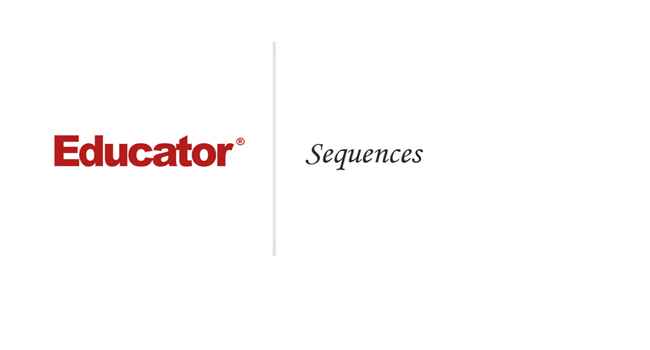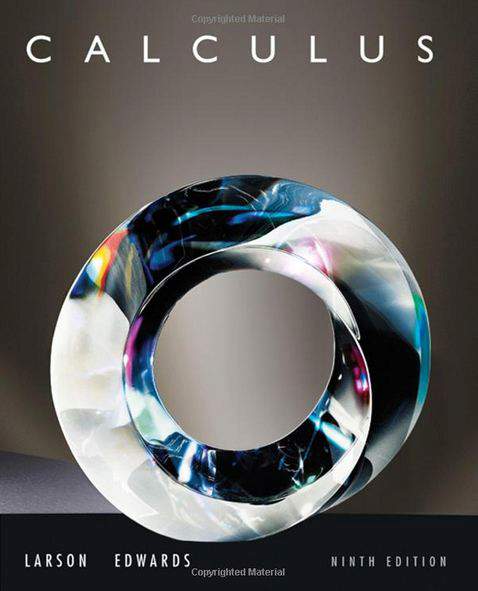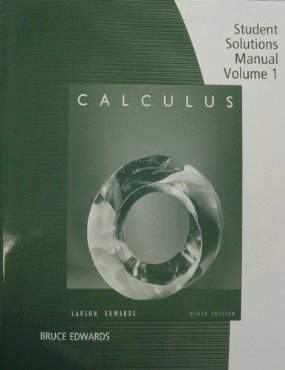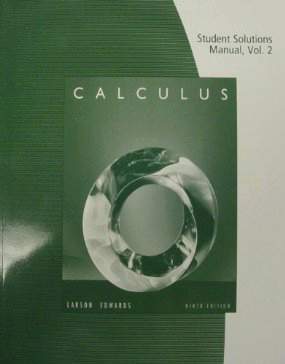

Professor Murray
Sequences
Slide Duration:Table of Contents
24m 52s
- Intro0:00
- Important Equation0:07
- Where It Comes From (Product Rule)0:20
- Why Use It?0:35
- Lecture Example 11:24
- Lecture Example 23:30
- Shortcut: Tabular Integration7:34
- Example7:52
- Lecture Example 310:00
- Mnemonic: LIATE14:44
- Ln, Inverse, Algebra, Trigonometry, e15:38
- Additional Example 4-1
- Additional Example 5-2
25m 30s
- Intro0:00
- Important Equation0:07
- Powers (Odd and Even)0:19
- What To Do1:03
- Lecture Example 11:37
- Lecture Example 23:12
- Half-Angle Formulas6:16
- Both Powers Even6:31
- Lecture Example 37:06
- Lecture Example 410:59
- Additional Example 5-1
- Additional Example 6-2
30m 9s
- Intro0:00
- Important Equations0:06
- How They Work0:35
- Example1:45
- Remember: du and dx2:50
- Lecture Example 13:43
- Lecture Example 210:01
- Lecture Example 312:04
- Additional Example 4-1
- Additional Example 5-2
41m 22s
- Intro0:00
- Overview0:07
- Why Use It?0:18
- Lecture Example 11:21
- Lecture Example 26:52
- Lecture Example 313:28
- Additional Example 4-1
- Additional Example 5-2
20m
- Intro0:00
- Using Tables0:09
- Match Exactly0:32
- Lecture Example 11:16
- Lecture Example 25:28
- Lecture Example 38:51
- Additional Example 4-1
- Additional Example 5-2
22m 36s
- Intro0:00
- Trapezoidal Rule0:13
- Graphical Representation0:20
- How They Work1:08
- Formula1:47
- Why a Trapezoid?2:53
- Lecture Example 15:10
- Midpoint Rule8:23
- Why Midpoints?8:56
- Formula9:37
- Lecture Example 211:22
- Left/Right Endpoint Rule13:54
- Left Endpoint14:08
- Right Endpoint14:39
- Lecture Example 315:32
- Additional Example 4-1
- Additional Example 5-2
21m 8s
- Intro0:00
- Important Equation0:03
- Estimating Area0:28
- Difference from Previous Methods0:50
- General Principle1:09
- Lecture Example 13:49
- Lecture Example 26:32
- Lecture Example 39:07
- Additional Example 4-1
- Additional Example 5-2
44m 18s
- Intro0:00
- Horizontal and Vertical Asymptotes0:04
- Example: Horizontal0:16
- Formal Notation0:37
- Example: Vertical1:58
- Formal Notation2:29
- Lecture Example 15:01
- Lecture Example 27:41
- Lecture Example 311:32
- Lecture Example 415:49
- Formulas to Remember18:26
- Improper Integrals18:36
- Lecture Example 521:34
- Lecture Example 6 (Hidden Discontinuities)26:51
- Additional Example 7-1
- Additional Example 8-2
23m 20s
- Intro0:00
- Important Equation0:04
- Why It Works0:49
- Common Mistake1:21
- Lecture Example 12:14
- Lecture Example 26:26
- Lecture Example 310:49
- Additional Example 4-1
- Additional Example 5-2
28m 53s
- Intro0:00
- Important Equation0:05
- Surface Area0:38
- Relation to Arclength1:11
- Lecture Example 11:46
- Lecture Example 24:29
- Lecture Example 39:34
- Additional Example 4-1
- Additional Example 5-2
24m 37s
- Intro0:00
- Important Equation0:09
- Main Idea0:12
- Different Forces0:45
- Weight Density Constant1:10
- Variables (Depth and Width)2:21
- Lecture Example 13:28
- Additional Example 2-1
- Additional Example 3-2
25m 39s
- Intro0:00
- Important Equation0:07
- Main Idea0:25
- Centroid1:00
- Area1:28
- Lecture Example 11:44
- Lecture Example 26:13
- Lecture Example 310:04
- Additional Example 4-1
- Additional Example 5-2
22m 26s
- Intro0:00
- Important Equations0:05
- Slope of Tangent Line0:30
- Arc length1:03
- Lecture Example 11:40
- Lecture Example 24:23
- Lecture Example 38:38
- Additional Example 4-1
- Additional Example 5-2
30m 59s
- Intro0:00
- Important Equations0:05
- Polar Coordinates in Calculus0:42
- Area0:58
- Arc length1:41
- Lecture Example 12:14
- Lecture Example 24:12
- Lecture Example 310:06
- Additional Example 4-1
- Additional Example 5-2
31m 13s
- Intro0:00
- Definition and Theorem0:05
- Monotonically Increasing0:25
- Monotonically Decreasing0:40
- Monotonic0:48
- Bounded1:00
- Theorem1:11
- Lecture Example 11:31
- Lecture Example 211:06
- Lecture Example 314:03
- Additional Example 4-1
- Additional Example 5-2
31m 46s
- Intro0:00
- Important Definitions0:05
- Sigma Notation0:13
- Sequence of Partial Sums0:30
- Converging to a Limit1:49
- Diverging to Infinite2:20
- Geometric Series2:40
- Common Ratio2:47
- Sum of a Geometric Series3:09
- Test for Divergence5:11
- Not for Convergence6:06
- Lecture Example 18:32
- Lecture Example 210:25
- Lecture Example 316:26
- Additional Example 4-1
- Additional Example 5-2
23m 26s
- Intro0:00
- Important Theorem and Definition0:05
- Three Conditions0:25
- Converging and Diverging0:51
- P-Series1:11
- Lecture Example 12:19
- Lecture Example 25:08
- Lecture Example 36:38
- Additional Example 4-1
- Additional Example 5-2
22m 44s
- Intro0:00
- Important Tests0:01
- Comparison Test0:22
- Limit Comparison Test1:05
- Lecture Example 11:44
- Lecture Example 23:52
- Lecture Example 36:01
- Lecture Example 410:04
- Additional Example 5-1
- Additional Example 6-2
25m 26s
- Intro0:00
- Main Theorems0:05
- Alternation Series Test (Leibniz)0:11
- How It Works0:26
- Two Conditions0:46
- Never Use for Divergence1:12
- Estimates of Sums1:50
- Lecture Example 13:19
- Lecture Example 24:46
- Lecture Example 36:28
- Additional Example 4-1
- Additional Example 5-2
33m 27s
- Intro0:00
- Theorems and Definitions0:06
- Two Common Questions0:17
- Absolutely Convergent0:45
- Conditionally Convergent1:18
- Divergent1:51
- Missing Case2:02
- Ratio Test3:07
- Root Test4:45
- Lecture Example 15:46
- Lecture Example 29:23
- Lecture Example 313:13
- Additional Example 4-1
- Additional Example 5-2
38m 36s
- Intro0:00
- Main Definitions and Pattern0:07
- What Is The Point0:22
- Radius of Convergence Pattern0:45
- Interval of Convergence2:42
- Lecture Example 13:24
- Lecture Example 210:55
- Lecture Example 314:44
- Additional Example 4-1
- Additional Example 5-2
30m 18s
- Intro0:00
- Taylor and Maclaurin Series0:08
- Taylor Series0:12
- Maclaurin Series0:59
- Taylor Polynomial1:20
- Lecture Example 12:35
- Lecture Example 26:51
- Lecture Example 311:38
- Lecture Example 417:29
- Additional Example 5-1
- Additional Example 6-2
50m 50s
- Intro0:00
- Main Formulas0:06
- Alternating Series Error Bound0:28
- Taylor's Remainder Theorem1:18
- Lecture Example 13:09
- Lecture Example 29:08
- Lecture Example 317:35
- Additional Example 4-1
- Additional Example 5-2
For more information, please see full course syllabus of College Calculus: Level II
College Calculus: Level II Sequences
In this tutorial we are going to take a look at Sequences. We are going to be exploring some different ways to find limits of sequences. There are several definitions that lead us up to a “big” theorem that can sometimes be a very powerful way to show that a sequence converges, and also to find its limit. We are going to talk about definitions of following terms: monotonically increasing, monotonically decreasing, monotonic and bounded. Then we are going to talk about that “big” theorem that tells us what happens if the sequence is both bounded and monotonic.
Share this knowledge with your friends!
Copy & Paste this embed code into your website’s HTML
Please ensure that your website editor is in text mode when you paste the code.(In Wordpress, the mode button is on the top right corner.)
- - Allow users to view the embedded video in full-size.










































 Answer Engine
Answer Engine
 or
or  . If you have 0 · ∞, you must put it into fraction form before you can use L’Hôpital. The same goes for 1∞ : Write
. If you have 0 · ∞, you must put it into fraction form before you can use L’Hôpital. The same goes for 1∞ : Write  . Then you can often sort out the exponent using L’Hôpital.
. Then you can often sort out the exponent using L’Hôpital. to take advantage of the identity
to take advantage of the identity 





1 answer
Wed Dec 28, 2016 11:13 AM
Post by Acme Wang on December 27, 2016
Hi Professor,
Just a bit confused about Example II. The question does not say take the limit as n goes to infinity, how could you just assume that? :):) Really nice video! Thank you very much!
1 answer
Wed Aug 19, 2015 10:06 AM
Post by Mitchell Mayberry on August 17, 2015
Are most of the problems in the sequences section for an average Calc 2 class going to be taking the limit?
1 answer
Wed Jul 1, 2015 8:50 AM
Post by Rafael Mojica on June 26, 2015
I dont understand why we went from sequences to taking the limit.
1 answer
Fri Jun 27, 2014 5:02 PM
Post by robert moreno on June 27, 2014
in ex.4 can you use l'hospital's rule after you use the conjugate?
1 answer
Sat Apr 19, 2014 5:37 PM
Post by Taylor Wright on April 16, 2014
In Ex1, how could (an-2)(an+1) be less than or equal to zero if an-2<0 and an+1>0 ? When multiplied together couldn't they only produce a negative value, therefore (an-2)(an+1) should only be < 0 ? I don't see how their product could ever equal zero.
Thank you.
1 answer
Mon Oct 21, 2013 7:45 PM
Post by Nommel Meless Ghislain Djedjero on October 17, 2013
I meant not by 3?
1 answer
Mon Oct 21, 2013 7:45 PM
Post by Nommel Meless Ghislain Djedjero on October 17, 2013
How do you know that the sequence is bounded above by 2 and not by 1 ?
1 answer
Fri Aug 31, 2012 5:39 PM
Post by Brian Raaflaub on July 27, 2012
How do you determine the divergence or convergence of the sequence sin(2n)/(1+(n^1/2)) ??
1 answer
Mon May 13, 2013 10:58 AM
Post by Real Schiran on November 4, 2011
Cool !!
1 answer
Mon May 13, 2013 10:57 AM
Post by khadar mire on October 25, 2011
very helpful.thanks eductors team
1 answer
Mon May 13, 2013 10:54 AM
Post by nizar ayadi on May 1, 2011
How can We determine if
the sequense n^2 e ^ (-n) is convergent or divergent ?
1 answer
Mon May 13, 2013 10:50 AM
Post by mary setlock on July 5, 2010
:) i just love BC calculus. what a great way to spend a monday night!
happy integrating!!!!!!
1 answer
Mon May 13, 2013 10:48 AM
Post by Collin Wilson on March 21, 2010
Hello,
in example 2, the notation should (for completeness) should be
lim (n-> inf) 3n+5n^2 / 2n^2 +6
:)